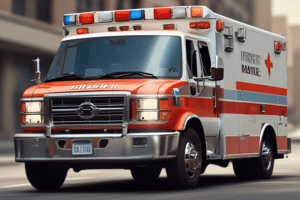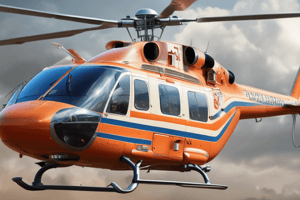Podcast
Questions and Answers
Flashcards
Median plane
Median plane
A vertical plane that divides the body into equal left and right portions.
Midsagittal plane
Midsagittal plane
A vertical plane that divides the body into unequal left and right portions.
Costohondritis
Costohondritis
Inflammation of the cartilage part of the ribs.
Coronal plane
Coronal plane
Signup and view all the flashcards
Encephala/o
Encephala/o
Signup and view all the flashcards
Epidermis
Epidermis
Signup and view all the flashcards
Agonist
Agonist
Signup and view all the flashcards
Antagonist
Antagonist
Signup and view all the flashcards
Synergist
Synergist
Signup and view all the flashcards
Excretion
Excretion
Signup and view all the flashcards
Digestion
Digestion
Signup and view all the flashcards
Flexion
Flexion
Signup and view all the flashcards
Extension
Extension
Signup and view all the flashcards
Adduction
Adduction
Signup and view all the flashcards
Abduction
Abduction
Signup and view all the flashcards
Pronation
Pronation
Signup and view all the flashcards
Supination
Supination
Signup and view all the flashcards
Inversion
Inversion
Signup and view all the flashcards
Eversion
Eversion
Signup and view all the flashcards
Ventral
Ventral
Signup and view all the flashcards
Dorsal
Dorsal
Signup and view all the flashcards
Lateral
Lateral
Signup and view all the flashcards
Medial
Medial
Signup and view all the flashcards
Proximal
Proximal
Signup and view all the flashcards
Distal
Distal
Signup and view all the flashcards
Infra-
Infra-
Signup and view all the flashcards
Super-
Super-
Signup and view all the flashcards
Superior
Superior
Signup and view all the flashcards
Inferior
Inferior
Signup and view all the flashcards
Study Notes
Review of Emergency Medical Services
-
Brake Fluid: Do not open brake fluid reservoir unless fluid level is low. Brake fluid absorbs moisture from the atmosphere.
-
Emergency Vehicle Parking at Night: Safe parking practices at night include NOT leaving headlights on.
-
Paramedic Vehicle Operation: Paramedics should not operate an emergency vehicle while taking cold remedies or analgesics.
-
Air Ambulances: Advantages of air ambulances do NOT include more experience of flight paramedics.
-
Helicopter Use: Helicopters are generally NOT used for patients in cardiopulmonary arrest who have not responded to defibrillation.
-
Ambulance Equipment Calibration: Cardiac monitors do not require calibration. Motor oil levels should be checked prior to starting the engine.
-
Ambulance Maintenance: If the odor of sewer gas is detected, close the hood and take the ambulance out of service. Brake fade should prompt immediate removal of the ambulance from service. High performance EMS systems usually adhere to a fractile response time standard. A third service EMS system operates independently from local fire departments.
-
Emergency Driving: "Due regard" means operating an ambulance while using lights and sirens does not exempt the driver from operating with concern for the safety of other road users. Decisions regarding the use of lights and sirens are made by the paramedic. Excessive use of lights and sirens when transporting a patient should not occur. Use good judgement. Avoid starting a grass fire when parking. If you lose sight of your spotter, stop the vehicle. Do not let a spotlight shine on incoming aircraft at night. Remain behind a vehicle that does not yield to you. Anticipate that the driver may slam on the brakes.
-
Transportation: Advise passengers to drive at normal speeds. If a small truck is tailgating, keep your current speed and advise the dispatcher to contact the police. If an ambulance and fire truck arrive at a red light- the fire truck has the right-of-way, the ambulance should stop and wait for all directions to be clear before proceeding. Use a pediatric transport securing device for young children. Stay behind another vehicle and anticipate that the driver may slam on the brakes if they do not yield.
-
Emergency Equipment: Use your personal protective equipment when interacting with patients, especially chemical spills.
Studying That Suits You
Use AI to generate personalized quizzes and flashcards to suit your learning preferences.




